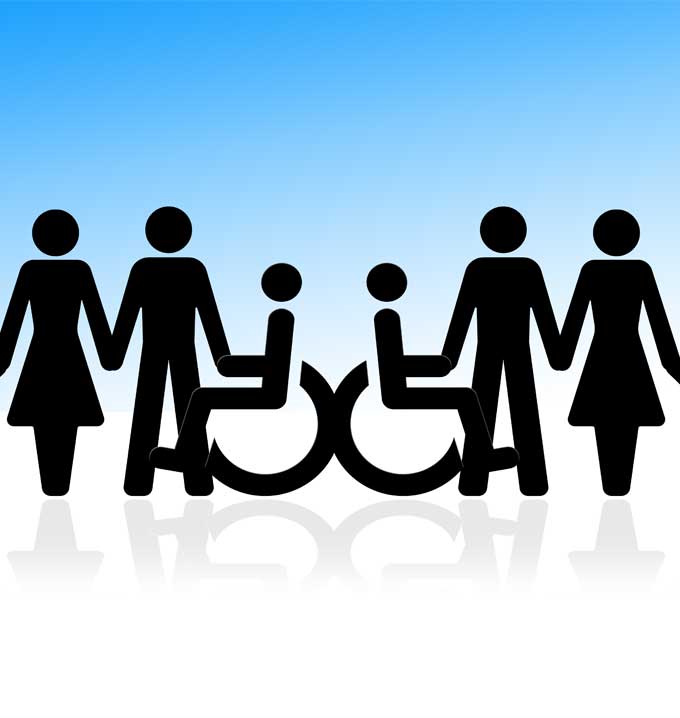Is Autism A Disability?
We take a look at the different models and definitions of disability and where autism fits in. We also cover whether autistic individuals are eligible for disability benefits.

Is Autism a Disability
Autism spectrum disorder (ASD) is a diverse group of neurodevelopmental disorder conditions that affects around 1 in 36 children in the United States. However, autism looks different for every individual. We use the term “spectrum” because there is a wide variety in the type and severity of the symptoms that autistic people experience.
Many parents and caretakers wonder whether autism is a disability. If not, is it a disorder? Or could it just be a difference in the way that people respond to the world around them?
Should we think of autism as a disability? The truth is that it depends. Some autistic people do not identify as disabled, while others embrace the term. The only reason this definition is important is because it is used by the Social Services Administration (SSA) to determine whether parents, caretakers, or individuals are eligible to receive disability benefits for autism.
In this article, we will look at the different models of disability, where autism as a disability fits in, and the disability benefits that parents, caregivers, and individuals can take advantage of.
What is a disability?
Before thinking of autism as a disability, it’s important to comprehend the relationship between the two by looking at the two most common definitions of disability in the U.S.
According to the Americans with Disabilities Act (ADA), an individual with a disability can be defined as “a person who has a physical or mental impairment that substantially limits one or more major life activities, a person who has a history or record of such an impairment, or a person who is perceived by others as having such an impairment.”
The definition of a medical disability, according to The Centers for Disease Control and Prevention, is “any condition of the body or mind (impairment) that makes it more difficult for the person with the condition to do certain activities (activity limitation) and interact with the world around them (participation restrictions).”
Disability models
There are a number of different ways of thinking about what constitutes a disability. The medical and social models have been the most common over the years, but a neurodiversity approach has also gained traction over the last few years. Here are some of the key aspects of each model.
Medical model of disability
Although the medical model of disability is still used, it’s a bit of an outdated concept for neurodiverse disorders. It refers to a disability that results from a physical condition that causes disadvantages to the person. The focus of this model is working on the person to try to “fix” the disability to lessen or eliminate the disadvantages it is causing.
This model often requires autistic people to mask or hide their symptoms in order to present as neurotypical. Repression is not an ideal solution, and this can lead to increased depression and anxiety.
Social model of disability
The social model of disability recognizes that a person might have impairments, but it is the restrictions imposed on these individuals by society that cause them to be at a disadvantage. Disability is seen as an element of diversity, and disadvantages are less obvious when societal and environmental barriers are removed.
It strives for societal changes rather than changes to the individual. Accommodations should be made for autistic people to ensure that they have the same opportunities as others despite their impairments.
An example of accommodations made in schools for autistic children can be using visual aids, having peer mentors, allowing extra time, and reducing sensory distractions, among others.
Neurodiversity approach to disability
The neurodiversity approach is gaining traction, and it builds on the social model. The approach in this model is that brains, like physical appearance, are all different and that this diversity should be valued.
It focuses on healthy growth and positive reinforcement to reduce negative habits and behaviors while simultaneously adjusting environmental and societal conditions to give neurodiverse individuals equal opportunities.
The type of intervention used varies from person to person and will be based on which approach will be the most beneficial for the individual. Changes to the individual are more about learning adaptive behaviors rather than trying to “normalize” the person.
Adaptive behaviors are taught through a combination of applied behavior analysis (ABA), occupational therapy, physical therapy, and speech therapy.
What type of disability is autism?
Technically, autism is a developmental disability that stems from structural and functional differences in the brain. While autism and some learning disabilities can go hand in hand, autism certainly has nothing to do with the intelligence of individuals. More specifically, it is about behavioral and social impairments that prevent autistic people from learning like neurotypical students in a traditional classroom environment.
With a combination of the right therapy, support structures, and accommodations, some autistic children and individuals can overcome and adapt to the barriers around them.
Can autistic individuals receive disability benefits?
Yes, people on the autism spectrum can get disability benefits. There are two kinds of autism disability benefits for eligible individuals, according to the Social Security Administration (SSA). These are:
- Social Security Disability Income (SSDI): This benefit is for adults who have worked in the past but who can no longer do so due to disability.
- Supplemental Security Income (SSI): This benefit is for disabled children and adults from lower-income situations. There is no requirement to have previously worked.
Of course, there are strict levels of criteria that individuals must meet to qualify for these benefits. However, autistic individuals who don’t meet the requirements could still qualify for other benefits such as a medical-vocational allowance, a Medicaid waiver, and other state-specific benefits.
Get early intervention and support with Lighthouse Autism Center
While autism is considered a disability from a legal and medical standpoint, it’s critical to be aware of the fact that not all autistic individuals self-identify as disabled. There are many different ways of defining a disability, but the most important thing is that autistic individuals get support and services as early as possible.
Our Lighthouse Fusion ABA therapy provides a uniquely high standard of care and assistance for autistic children. We have a passionate team of professionals and a huge archive of autism resources that ensure autistic individuals have access to world-class support.
Together, we can unlock your child’s potential
Related News

06/11/2025
Overcoming Stereotypes
Autism stereotypes are common and can have significant social consequences for autistic children. Misconceptions hinder the acceptance and inclusion of autistic children. Challenging these stereotypes is vital for creating a more understanding and supportive society. Challenging Common Autism Stereotypes When people hear the word “autism,” they often imagine a narrow set of images, like the […]

06/11/2025
What’s Next After ABA Therapy?
There are a number of reasons why an autistic child might stop ABA therapy, and one is that they have reached their goals. In this article, we take a look at what parents can expect going forward. What Are the Next Steps After ABA Therapy? As a parent, you only want what’s best for your […]

06/11/2025
Do Babies with Autism Smile?
We take a look at the importance of early intervention, some of the milestones for parents to look out for, and the more common signs of autism in babies. Do Babies with Autism Smile? Watching your baby grow is an exciting time, certainly one of life’s quiet wonders. From those first sleepy stretches to the […]


